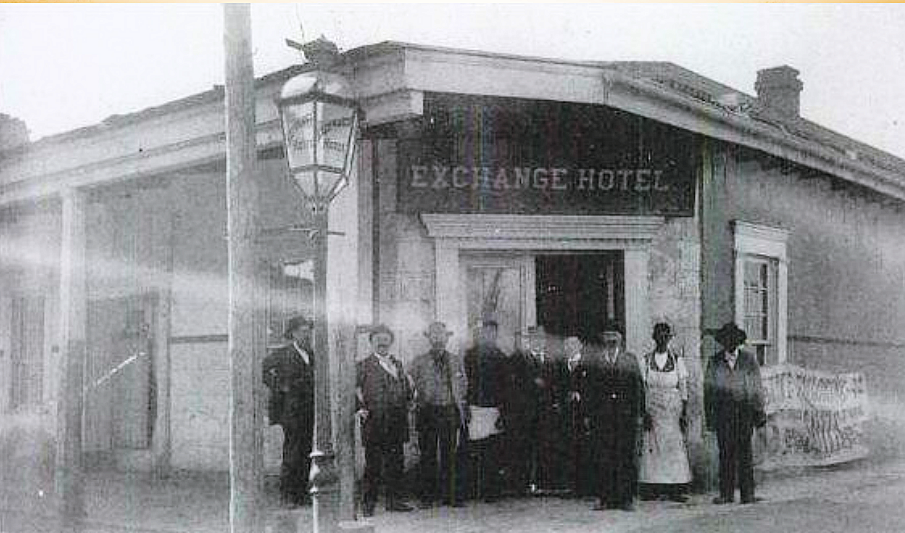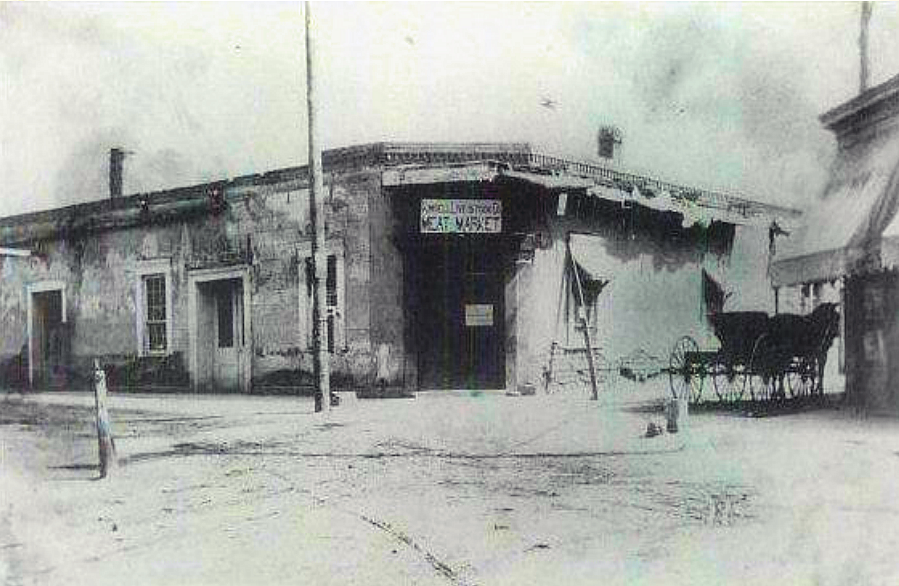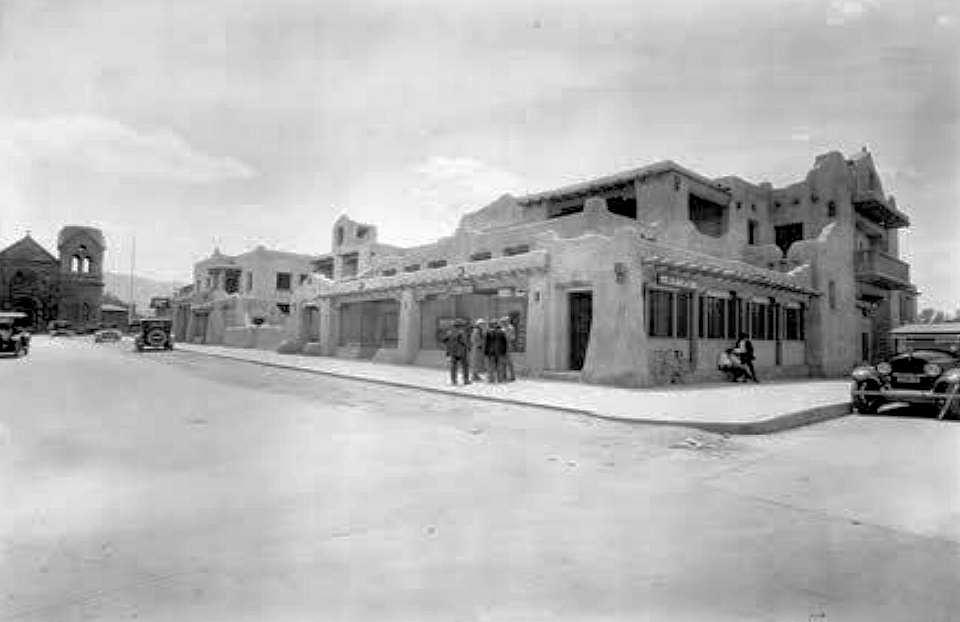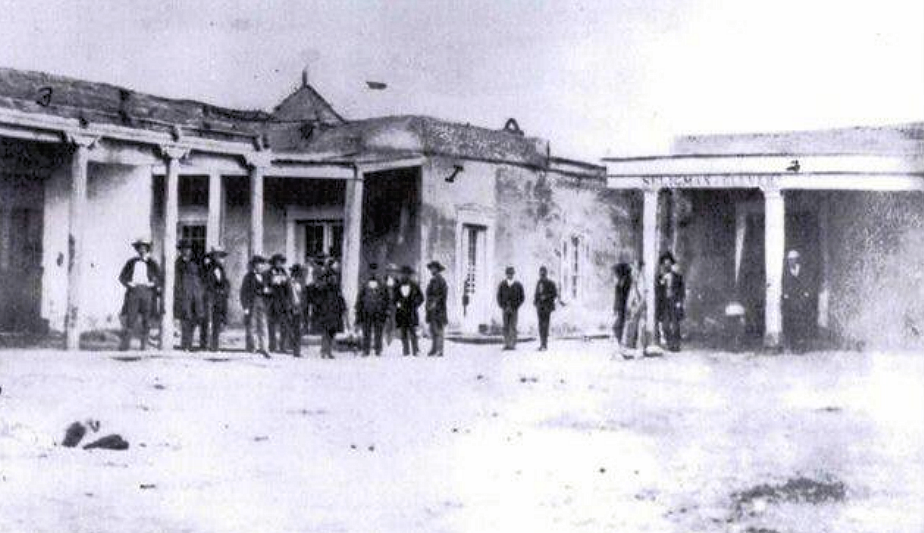An old story claims that in Spanish times Santa Fe had a single hotel, La Fonda, Spanish for “the Inn,” at the same location as the present-day La Fonda. However, no documents have been found to confirm that. Local historian Marian Meyer has reported that an American couple, William and Mary Donoho, operated the place from 1833 to 1837. The hotel has also been called “the Exchange Hotel,” “The Fonda,” “The U.S. Hotel” and the “La Fonda Americana.”
After the American conquest in 1846, the La Fonda was still the only real hotel in town. One guest complained that “it was so badly kept and supplied that few people paid it a second visit.” Entrance to the lobby was on the corner, and an inside door gave access to the hotel’s saloon. There was a long placita or interior courtyard, and a high-walled corral attached to the north for patrons’ horses.
In 1848, the inn was purchased by new owners who changed its name to the U.S. Hotel. The gambling hall continued to be a significant feature, providing entertainment for military officers, visitors, and the occasional professional gambler.
On June 14, 1862, a soldier named James Bennet visited the La Fonda and wrote in his journal about what he witnessed while he was staying there. Bennet was seated in the La Fonda’s lobby when a cowboy came in and started shooting up the hotel. The cowboy said he was from Texas and was getting even for a friend of his who had recently been killed. The cowboy shot a lawyer in the stomach and another man in the arm before he was captured and thrown into jail. Later that night the cowboy from Texas was lynched and hung in the backyard of the La Fonda.

In 1867 the hotel was sold again and became the Exchange Hotel. The Honorable John P. Slough, Chief Justice of the Territorial Supreme Court, was shot to death in the hotel lobby in the same year. Slough was in a dispute with Captain Rynerson, a member of the Territorial Legislature representing Dona Ana County, when he called Rynerson a liar and a thief. The offended Rynerson then shot Slough, who soon died of his wounds. Rynerson was tried in a court of law and was later acquitted.
According to another local legend, a businessman spent a day and evening at the La Fonda drinking and gambling. By the end of the evening, the nameless man had lost all of his money and was heavily in debt. Desperate over his foolish actions, the unlucky gambler, in a crazed state, ran into the inner courtyard and committed suicide by jumping into the well.
The current building was built in 1922 on the site of the previous inns. In 1925 it was acquired by the Atchison, Topeka Santa Fe Railroad which leased it to Fred Harvey. For more than 40 years, from 1926 to 1968, La Fonda was one of the famous Harvey Houses, a renowned chain of elegant hotels. The expansion of La Fonda into a Harvey House increased the number of guest rooms from the original 46-55 (estimates vary) to 156, which warranted a significant addition to accommodate the increasing numbers of tourists who stayed at La Fonda.

Subsequent expansions in 1949 and 1998 have increased the hotel’s capacity to 172 guest rooms and suites today. Other notable changes are the 1976 conversion of the hotel’s courtyard to an enclosed space for the restaurant La Plazuela; the building the Carriage House and the parking structure in 1984. It also added the Lumpkins Ballroom on the second floor in 1990, the addition of La Terraza banquet room and 14 luxury rooms and suites on the third floor in 1998.
In the 2009 renovation of La Plazuela, Mary Jane Colter’s original designs and dictates were followed closely. Major structural work included a new flagstone floor and the restoration of a central fountain that had been removed in 1976 when architect William Lumpkins enclosed the courtyard. Architect Barbara Felix and Interior Designer Dierdre Wilson hired talented artisans, as Colter did in her day, to make everything from wrought iron sconces and hand-forged railings to beautifully carved chairs and furnishings. Thousands of hours went into the crafting of every detail of La Plazuela.
Source: New Mexico’s Most Haunted by C. Polston

